Horses are hands-down the most majestic creatures oozing grace and mystique (as seen in the eyes of your writer, a life-long sufferer of a heavy horse addiction). The sound of their hooves on frozen ground, their velvety noses and soft snorts truly do have a profound effect on a human being, but this side has been widely documented in various phrases, aphorisms, and poems. What the poems tend to keep silent about, though, is a horse's ability to fart straight in your face and then spook at it. Right, spook at their own farts. They are also absolute masterminds at looking for trouble and champions at injuring themselves in the silliest possible ways (most often by forgetting they have four legs). And oh, the work that comes with owning one…! All very worth it, but forget about sleeping in, like, ever.
Anyway, you haven't opened this article to read a rant, but rather check out our collection of interesting facts about horses, right? So, here they are! And if you know horses from pictures only, you'll probably be surprised to know that they are highly social, very intelligent animals (remember, equestrian sports are the only Olympic sports including animals!), capable of emotions and forming strong bonds with their owners. Of course, not everything on this list is as serious as this, for there are also some fun facts about horses included. For instance, a mention of a horse's inability to puke, funny mustaches, and them being solid gluttons, eating for about 18 hours a day. See, there's so much interesting stuff to be learned about horses!
And before your writer starts ranting again about getting a rash from a piece of straw stuck under a sweater or regularly stepping into fresh piles of manure, let's end this introduction and skip straight to our list of horse facts. They are just, as usual, a bit further down. Once you are there, be sure to rank these cool facts since now they're all jumbled up. And lastly, share this fun horse trivia with anyone you'd like!
This post may include affiliate links.
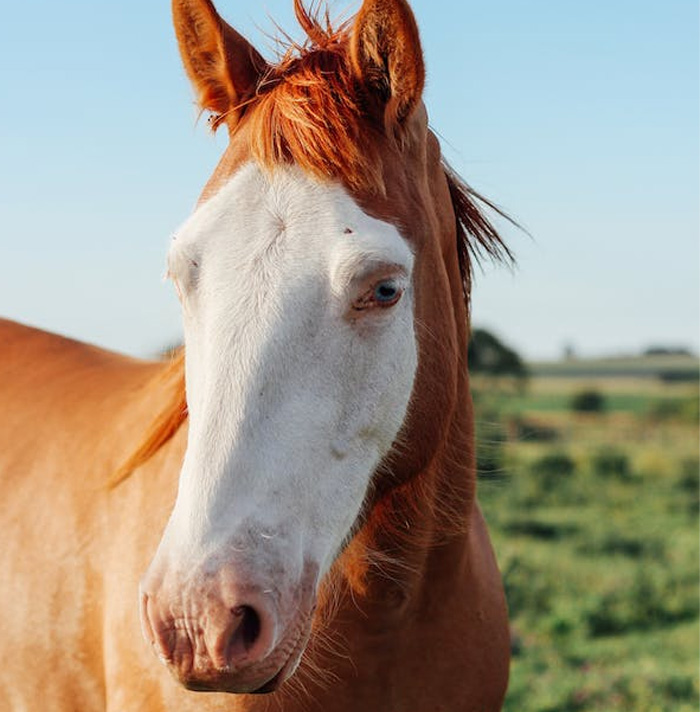 There are 10 different muscles in horses' ears.
There are 10 different muscles in horses' ears.
As a result, they may move the ears independently of one another and rotate them nearly 180 degrees. Humans have only three muscles in their ears.
Horses cannot breathe through their mouths.
Horses are "obligate nose breathers," meaning they can't breathe via their mouth as humans can.
Horses can see almost in all directions.
That's because their eyes are on the sides of their heads. However, they have two blind spots—one immediately behind them and the other immediately in front of and below their nose. As a result, they cannot see the carrot you are holding out to them or the grass they are grazing on! Instead, they decide what they want to consume using their flexible and sensitive lips, whiskers, and sense of smell.
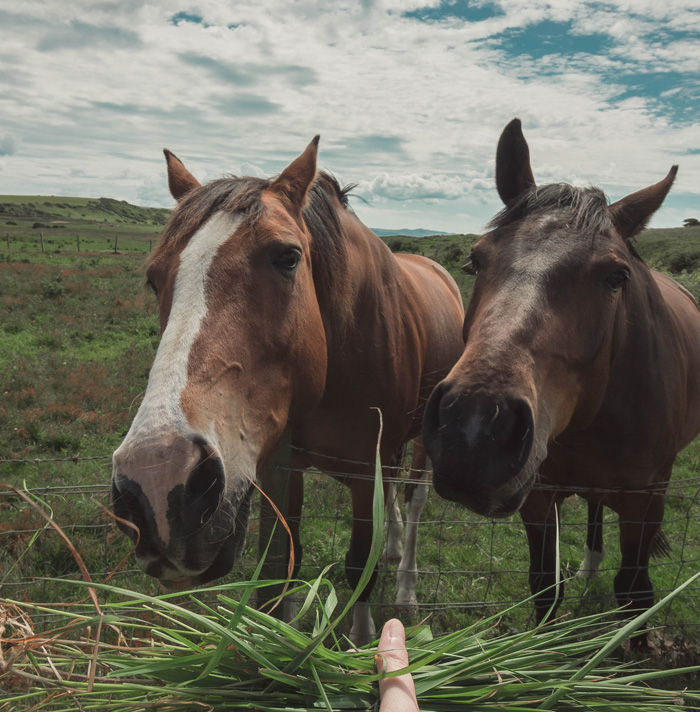 Horses are not able to vomit or burp.
Horses are not able to vomit or burp.
Most vertebrate animals can vomit, but horses have lost it over time. At the opening of their stomachs, they have a very powerful muscle ring called the cardiac sphincter. Any food that enters the stomach cannot leave again because of this structure. Also, they have weak vomit reflexes. Because of that, you should be careful about what you feed them.
The priciest horse ever sold for $70 million.
A Thoroughbred racehorse named Fusaichi Pegasus was bought by Coolmore Stud in Ireland for an astounding $70 million in 2000. The horse was an underwhelming purchase, given his exorbitant price. Nevertheless, he was the sire of three Grade 1 stake winners and the grandfather of Ruler on Ice, the Belmont Stakes champion.
Horses can sleep standing.
A system of tendons and ligaments known as the "stay apparatus" allows horses to keep their legs in place so they can unwind without falling over. Horses use this device to relax when they aren't resting so they won't get tired from standing around for extended periods of time. This enables them to save energy when standing and be prepared to take to the air if necessary. Horses actually spend a little period of time each day lying down for deeper slumber, contrary to the popular belief that they never do so.
If they sleep laying down that's a great sign that they're relaxed and feel safe.
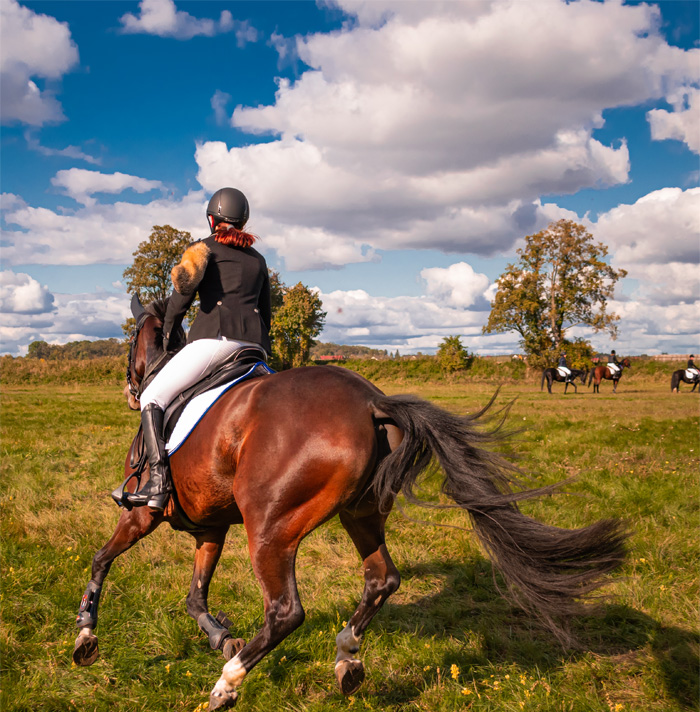 Horses are very intelligent creatures.
Horses are very intelligent creatures.
Like dogs, they may be trained to perform various activities using clicker training and positive reward. According to one study, horses may express their requirements to their caregivers by tapping symbols on a board. These horses learned to indicate whether they wanted a blanket on or off by touching the symbols.
The reason a lot of people don't think horses are not intelligent is that most people are used to predator animals like dogs and cats. Horses are prey animals and look at things differently. When my mare was new to me, after being with a girl who overworked her, she'd untie my quick release knot but not go anywhere. She was literally telling me she chose to be with me.
Horses have fast reflexes.
In the face of danger, they can kick hard in just 0.3 seconds from a standing position, as opposed to the human reaction time of 1.6 seconds.
Horses are able to understand and interpret human emotions.
In a study conducted by the Universities of Sussex and Portsmouth, it was discovered that horses have the ability to read human facial expressions and remember a person's previous emotional state in order to modify their behavior. Horses naturally possess this skill because they are capable of making complex facial expressions. Smith and colleagues (2016) found in a different study that horses' hearts beat faster when they saw angry human faces as opposed to cheerful ones. According to the study's findings, horses can recognize both positive and negative human facial emotions and become more anxious when viewing furious faces.
Horses can develop mustaches.
Horses with mustaches, which are frequently found on the lovely Gypsy Vanner horse breed, are said to be better able to distinguish between different kinds of grass and sense things that are directly in front of them. Long sensory hairs, often known as whiskers, serve this function on the majority of horses.
A horse's whiskers cannot be cut during FEI (International Equestrian Federation) competitions as of July 1, 2021. Any horse whose sensory hairs are removed will be excluded from the competition, per the new rule.
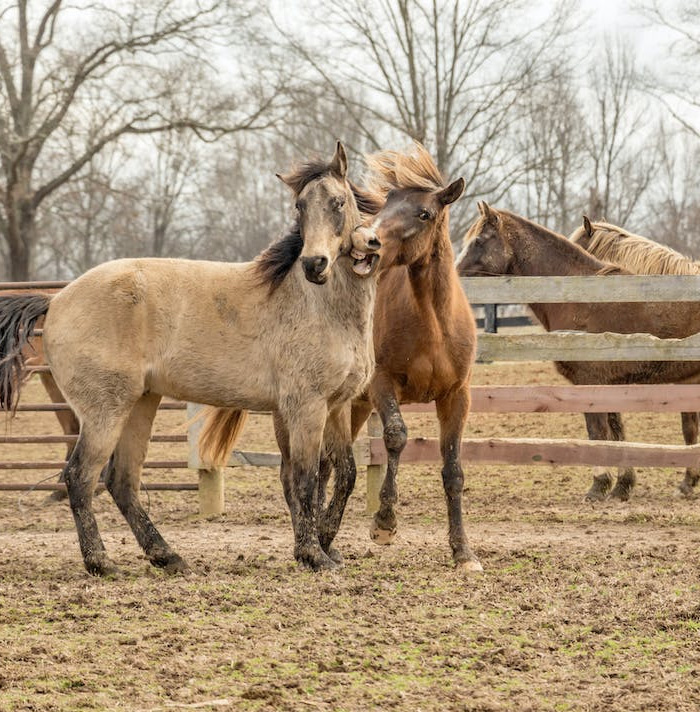 Horses feel more comfortable being in the herd.
Horses feel more comfortable being in the herd.
Small herds of horses live in the wild, and companionship makes domestic horses more at ease. Living alone can be very distressing for a horse. Horses may find companionship in the form of a stablemate or even a different species like a goat, donkey, or mule. Even a dog could end up being a good friend for a horse.
Horses are highly social creatures.
Horses are prey animals. Thus, they seek protection in herds and develop close social bonds. They spend time with those they have made friends with and utilize their senses to identify known horses. While the other horses in the herd take time to eat, rest, and sleep, one horse in the wild will stand guard to keep watch.
Have met horses that did not like other horses, and did better separated
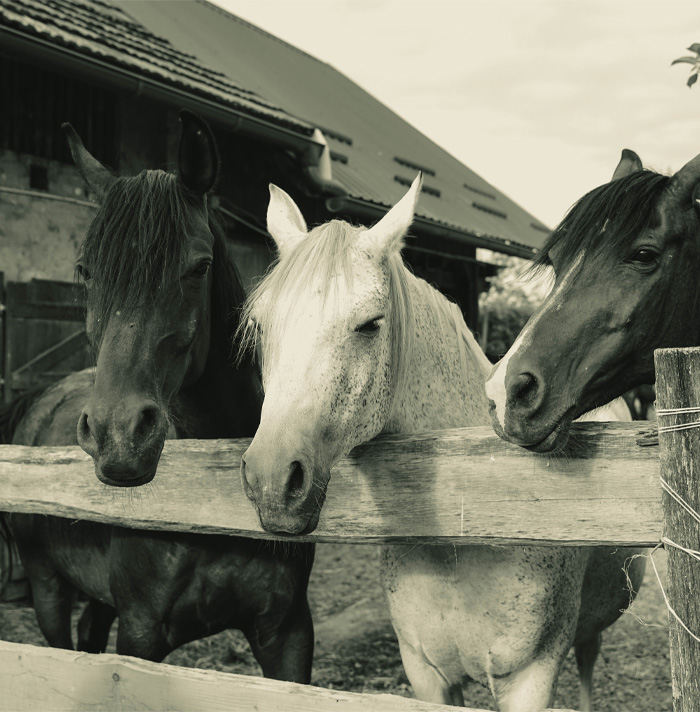 The oldest ever horse was 62 years old.
The oldest ever horse was 62 years old.
Old Billy (1760–1822), the oldest horse in history, now maintains the title. He was from Woolston, Lancashire, England, and worked as a barge horse. He was most likely a Shire-type horse with a brown coat and a white blaze, though his exact breed is unknown. In human years he was approximately 165.
Horses can't spend a lot of time hungry.
There is a reason why horses spend 16 to 18 hours a day grazing. For their stomachs to work properly, food should always be present. A horse's stomach may already feel uncomfortable after a 1- to 2-hour fast. But horses who go without food for an extended period of time almost always acquire painful stomach ulcers. This is due to the fact that the stored stomach acid, which is supposed to digest food particles, will begin to harm the stomach lining.
Horses are measured in "Hands."
A hand is the unit of measurement used to gauge a horse's height. Four inches are equal to one hand. Equine under 14.2 hands is a pony.
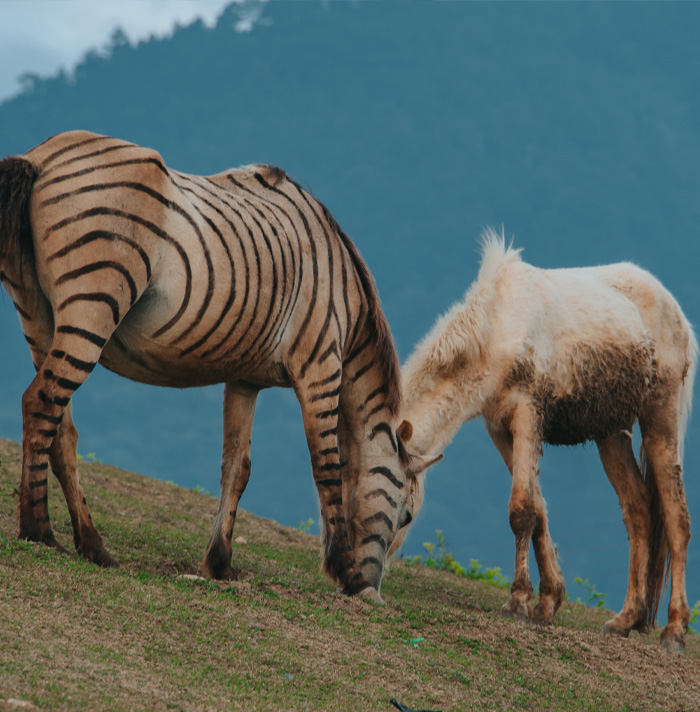 Donkeys, zebras, and rhinos are horses' closest cousins.
Donkeys, zebras, and rhinos are horses' closest cousins.
These animals all share the trait of having an odd number of toes. The rhinoceros, equines (horses, zebras, and donkeys), and the Brazilian tapir are the only three groups of odd-toed ungulates known to exist. Contrarily, even-toed ungulates, which include cows, goats, sheep, deer, and many more, are much more widespread.
It takes 10–12 months for an entirely new hoof to grow.
Hoof growth on horses typically occurs at a pace of 1/4 to 1/2 inches per month. However, this can change during the course of the year. In the summer, horses' hooves are known to grow more quickly.
Horses only lack one bone compared to humans.
Horses have 205 bones in their skeleton, one less than humans (206). Not every breed of horse, nevertheless, fits this description. Arabian horses only have 201 bones since they lack a pair of ribs, a lumbar vertebra, and a tail vertebra.
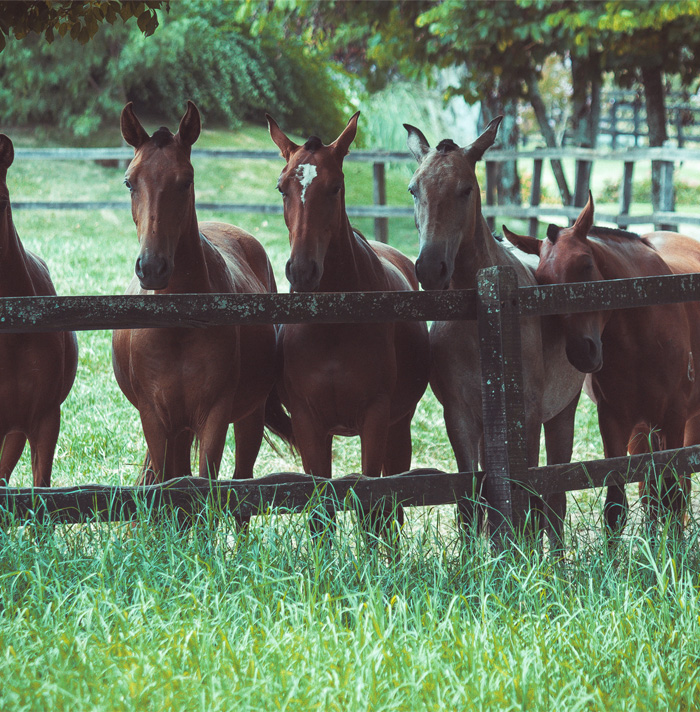 In a herd of horses, there is always a sentry.
In a herd of horses, there is always a sentry.
By banding together in a herd, horses considerably improve their chances of surviving, but they must still watch out for predators. One horse in a herd will constantly be alert for any threats while the others are relaxing, eating, or sleeping.
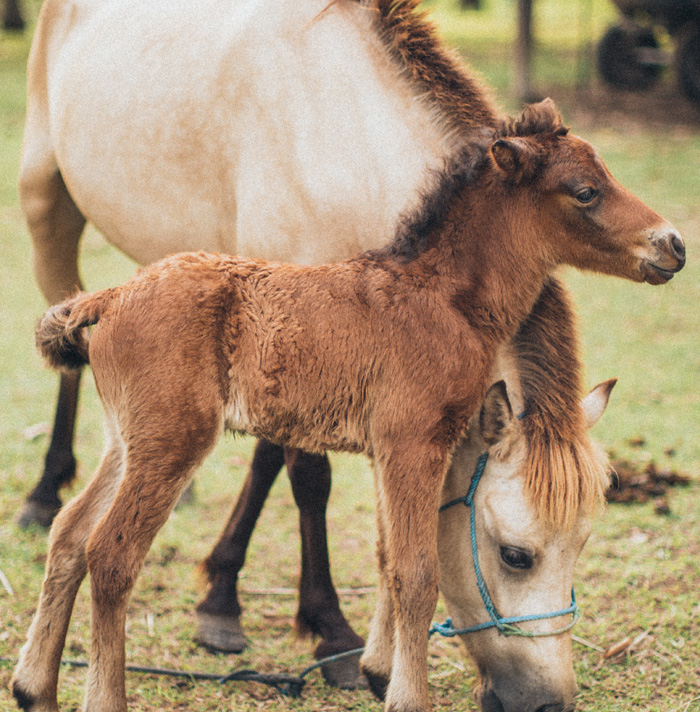 Horses are capable of walking and running within a few hours of birth.
Horses are capable of walking and running within a few hours of birth.
A newborn foal's survival in the wild depends on its ability to keep up with the herd. Horses have long legs and completely developed hooves at birth because of evolution.
Twin horses are incredibly uncommon.
Horses, unlike the majority of mammals, are not designed to support multiple fetuses. A veterinarian would typically remove the smaller embryo when an ultrasound shows that the pregnancy is twins in order to protect the mare and the other foal. Owners of mares might choose to keep both foals despite the risk if such a pregnancy is not discovered early. Most people cannot afford the expensive surgery required to remove one of the foals later.
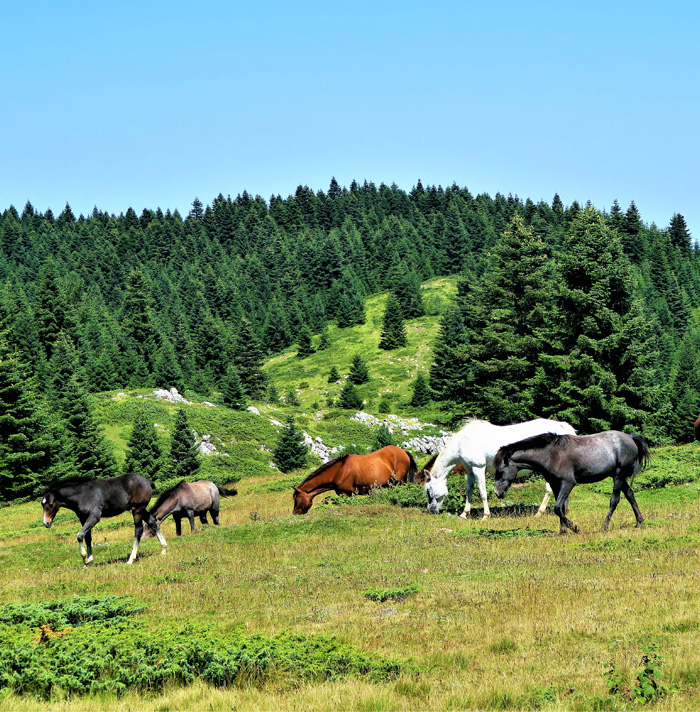 Horses typically live 25 to 30 years.
Horses typically live 25 to 30 years.
Domestic horses are living longer, healthier lives as equestrian care and veterinary medicine advance. Although the maximum age a horse can reach is still constrained by genetics, nutrition, and environmental variables. Ponies typically live longer than horses do, and many will survive past the age of 40. A few horse breeds, including the Haflinger, Appaloosa, Icelandic Horse, Quarter Horse, and Arabian types, also have longer life expectancies than the general population.
How does usage affect longevity? Are there different lifespans in racing horses, draft horses, trotters, et al?
Approximately 60 million horses exist in the world today.
Except for Antarctica, every continent has horses. The United States is the nation with the greatest number of horses in the world. The Food and Drug Administration estimates that there are about 3.8 million horses in the United States in the 2020 report. By comparison, the 2008 estimates of 9.2 million show a dramatic fall.
Horses' teeth are larger in males than in females.
Male horses frequently have 40 teeth while mares only have 36 because stallions and geldings are more likely to have wolf teeth. Approximately 70% of horses will grow wolf teeth between the ages of 5 months and 1 year, according to thehorse.com. Glennon Mays, a veterinarian, claimed that horses' ancestors were little browsers that lived in woodlands. Their major sources of food were twigs and leaves, which they chewed thoroughly using their wolf teeth.
The record-breaking miniature horse measured just 17.5 inches.
Due to her exceedingly diminutive stature, Thumbelina (2001–2018), a dwarf miniature horse, gained notoriety all over the world. Thumbelina was the tiniest horse ever, measuring just 17.5 inches (44.5 cm) tall and weighing 57 pounds (26 kg). The tiny chestnut mare was born in St. Louis, Missouri, on a farm for miniature horses. Thumbelina even went on tour in the US to meet her fans after being inducted into the Guinness Book of World Records.
The typical horse's heart measures over ten times larger than a human's.
A human heart typically weighs only 10-12 ounces (0.28-0.34 kg), whereas the average horse heart weighs 9-10 pounds (4-4.5 kg). Racehorses have even larger hearts, and many racing legends credit their success to their large hearts. If you are aware of your horse's body weight, you may quickly determine how heavy his heart is. According to research, a horse's heart weighs about 1% of his total body weight.
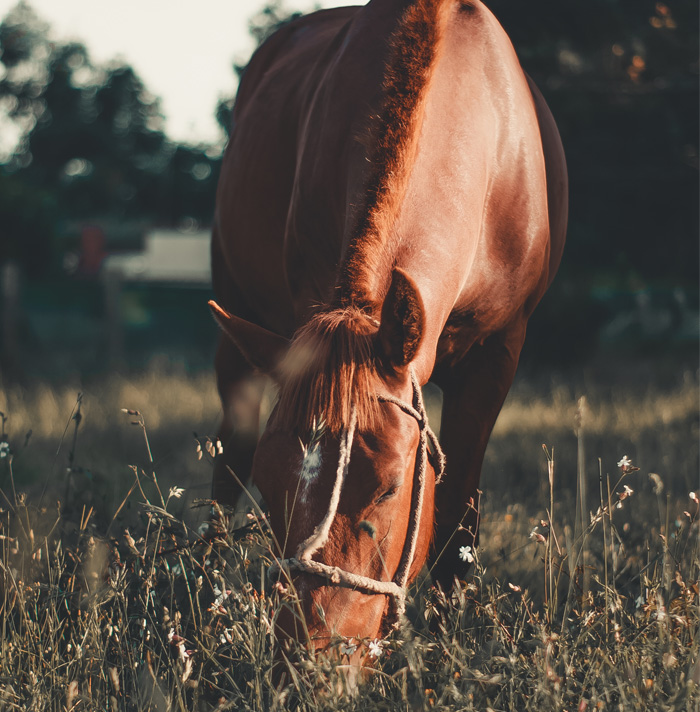 Horses have a fixed pelvis.
Horses have a fixed pelvis.
It doesn't allow them to do splits. However, they can move laterally, which enables them to use their rear feet to scratch their ears.
Do we categorize animals by which ones can do the splits? I was never taught this in school. (Another failing of the american educational system…)
There are over 600 horse breeds.
These five subcategories—hot-blood, warm-blood, cold-blood/draft, pony, and miniature—comprise all recognized horse breeds. Arabian, Thoroughbred, and Barb horses, which have their roots in the Middle East, are examples of hot-blooded horses. In contrast, northern Europe is where cold-blooded (heavy) horses and ponies evolved.
Cloning horses have been successful.
A genetically similar mother gave birth to Prometea, a Haflinger filly, in Italy in 2003. After the birth of a mule clone earlier in 2003, she was the first horse to be successfully cloned. The cloning of horses and other animals is still a subject of great debate. The technology might, however, be used to clone geldings and use them as breeding stallions, according to some equestrian experts.
For when you castrate your stallion and then later realize you want some offspring from him.
Horses have four standard gaits.
The walk, trot, canter, and gallop are the four natural gaits of horses. Even though they are not the same, the terms "canter" and "gallop" are frequently used synonymously by laypeople. A four-beat pace called a gallop is far faster than a three-beat gait called a canter. Some horse breeds have additional gaits in addition to the four fundamental ones. For instance, the Icelandic horse is renowned for its tölt gaits and easy but quick speed.
And some horses pace (legs on one side move together, like a camel). Or rack - I don't know how to give a correct description of this movement. Some breeds have other gaits, too. And if you've ridden for any length of time, it's very easy to feel when your horse is cantering vs. when it's galloping! You can also hear the beat difference when you listen hard enough.
Horses have been known to jump as high as 8 feet 1.25 inches.
On February 5, 1949, in Vina del Mar, Chile, Captain Alberto Larraguibel Morales rode Huaso ex-Faithful and cleared 8 ft 1.25 in (2.47 m). According to the FEI, jumpers must clear 2.49 meters in order to surpass the Thoroughbred's previous record. It's interesting to note that American Fred Wettach Jr. and his horse King's Own currently hold the unofficial record. In front of 25 spectators, the pair made a jump of 8 feet, 3.5 inches (2.53 meters), but it wasn't an official attempt.
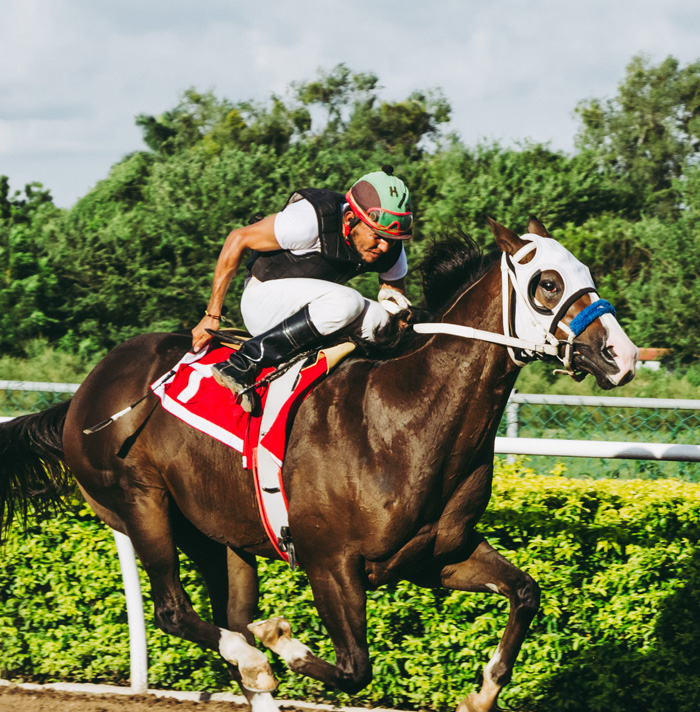 The 1,000 km-long horse race.
The 1,000 km-long horse race.
The Mongol Derby, which takes place every year and spans 1,000 km (621 mi) of the Mongolian steppe, is the world's longest and toughest horse race. Each year, more than 45 competitors ride semi-feral native horses to the finish line. Around 1,500 Mongolian horses are reportedly trained for the race each year, according to equestrians. Before the race begins and after each part is finished, the horses are examined by a veterinarian. Only competitors with totally healthy and fit horses are allowed to continue.
Horses can drink approximately 5 l of water per 100 kg of body weight each day.
Getting enough water in is just as important as eating the right foods. For instance, a 500 kg horse would consume about 25 l every day. Of course, other factors like the horse's age, the environment's humidity, and how it is trained also play a role in this.
According to estimates, the horse's first ancestor lived 55 million years ago.
Only the size of a Labrador retriever, its ancestor. According to evidence from archaeological sites, the domestication of horses began around 6000 years ago in the grasslands of modern Ukraine. They were initially domesticated as a source of food.
Horses don’t have collarbones.
Collarbones stabilize the shoulders and join the arms to the skeleton in the majority of animals. In contrast, the thoracic sling serves this purpose in horses. The muscles, tendons, and ligaments that connect the forelimbs to the rest of the body are collectively known as the thoracic sling. Horses and other four-legged runners don't have collarbones because it allows them to move more quickly.
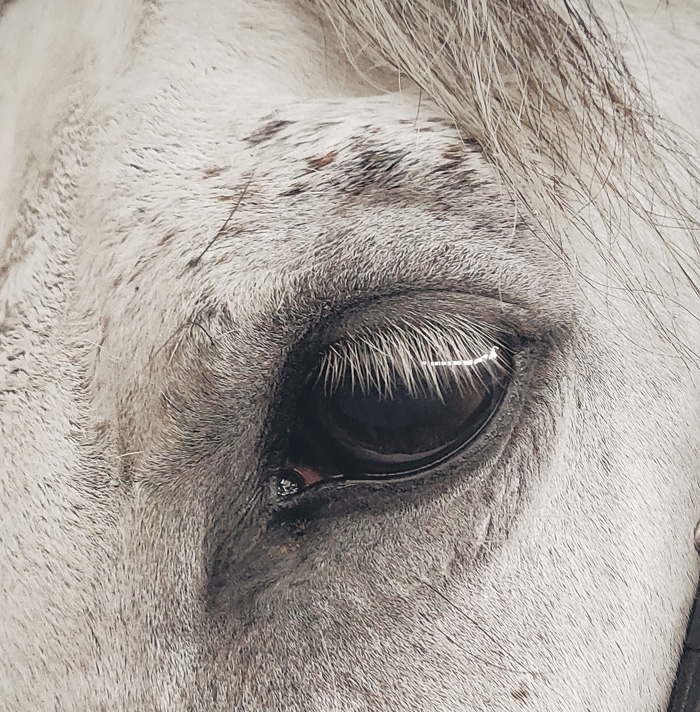 The largest eyes of any land mammal are found in horses.
The largest eyes of any land mammal are found in horses.
In terms of raw size, horses' eyes are larger than those of all other land mammals. Horses have eyes that are eight times larger than ours! When compared to other breeds, Arabian horses have very big eyes.
The Americas did not originally have horses.
Although the modern horse didn't originate in the Americas, its relatives did before mysteriously falling extinct between 8,000 and 12,000 years ago. Climate change and human overhunting are two potential factors that scientists are still looking into. Fortunately, about 2-3 million years ago, horses migrated from Alaska to Eurasia, where they were able to survive. Horses had vanished from America and weren't seen again until Christopher Columbus brought them back in the late 15th century.
You may determine a horse's age by looking at its teeth.
Although you can't determine a horse's exact age by looking at its teeth, you may make an educated guess. Senior horses must be fed with additional caution because they sometimes live longer than their teeth, necessitating proper equine dental care.
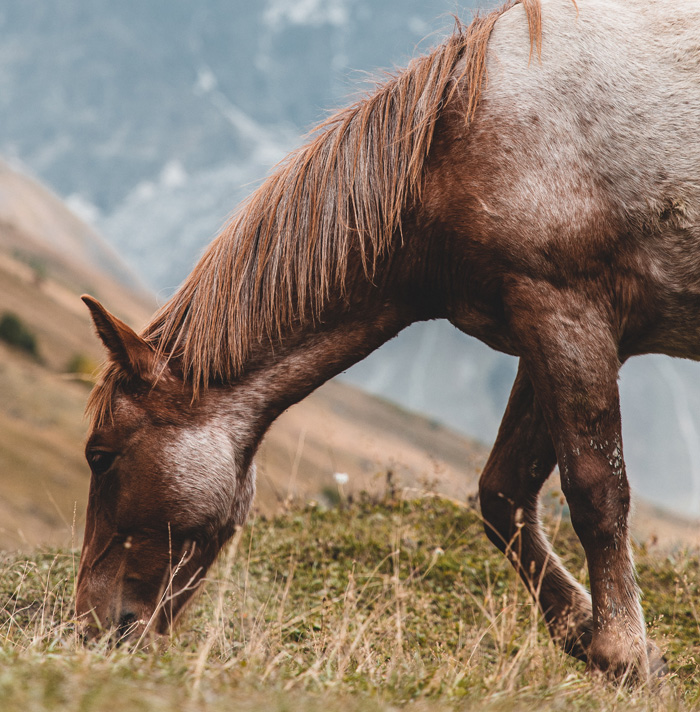 The resting respiratory rate of a horse is approximately 8–14 breaths per minute.
The resting respiratory rate of a horse is approximately 8–14 breaths per minute.
It's crucial to be aware of your horse's resting pulse and respiratory rate. Even though a horse's resting respiration rate might be as low as eight breaths per minute, it can swiftly rise during exertion or in times of stress.
You can feel your horse's pulse in the lower front of the neck area, directly between the front legs.
Their amused expressions are not signs of laughter.
Instead, the flehmen reaction refers to this activity, which is focused on acquiring a better whiff of an intriguing scent. The process enables the transport of pheromones and other odors to the vomeronasal organ (VMO), which subsequently communicates with the brain to cause physiologic and behavioral responses.
The tallest horse ever measured was 21.25 hands tall (2.20m).
Sampson, a Shire horse, was born in Bedfordshire, England, in 1846 and measured an impressive 21.25 hands. He was over seven feet tall at the withers, which hasn't been surpassed since. Additionally, he weighed a staggering 3,360 pounds (1,524 kg)!
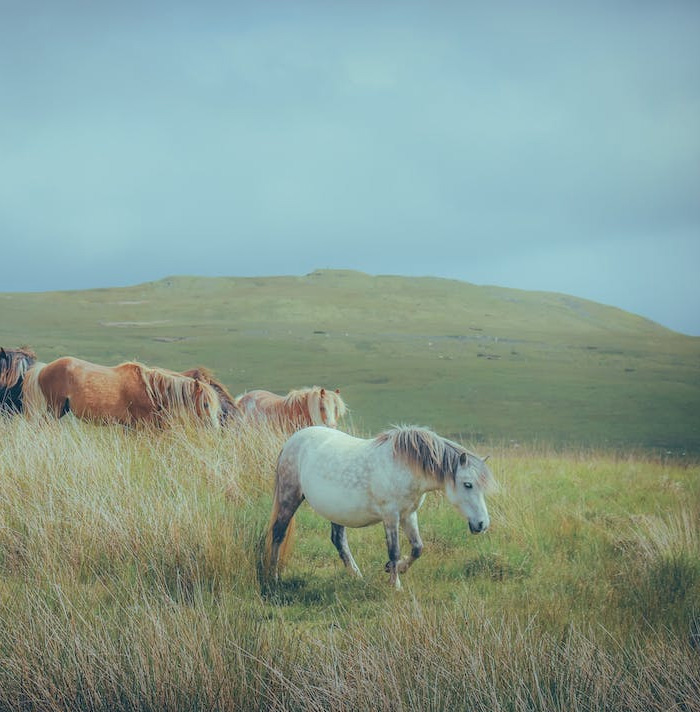 True wild horses are no longer present in the world.
True wild horses are no longer present in the world.
The Przewalski's horse was once believed to be the sole "genuine" wild horse breed. The majority of horses that are currently thought of as wild, such as the American Mustangs and Australian Brumbies, are actually descended from domestic horses. Since truly wild horses have never been domesticated, the term "feral" is the one that best describes these animals.
American Quarter Horse is known for being the most popular horse breed.
Over 2.8 million horses were registered with the American Quarter Horse Association, the largest breed society in the world, in just 2020. Currently, 2.4 million Quarter Horses live in the United States, and many more are dispersed throughout the globe.
With fewer than 200 left, the Sorraia is the rarest horse breed.
These wild ponies, who were originally from Portugal, were on the verge of extinction in the early 20th century. It is believed that sorries are descended from early horses that were indigenous to southern Iberia. They have simple patterning on their legs, including zebra stripes and a dorsal line. They can have a convex profile and come in a variety of dun shades.
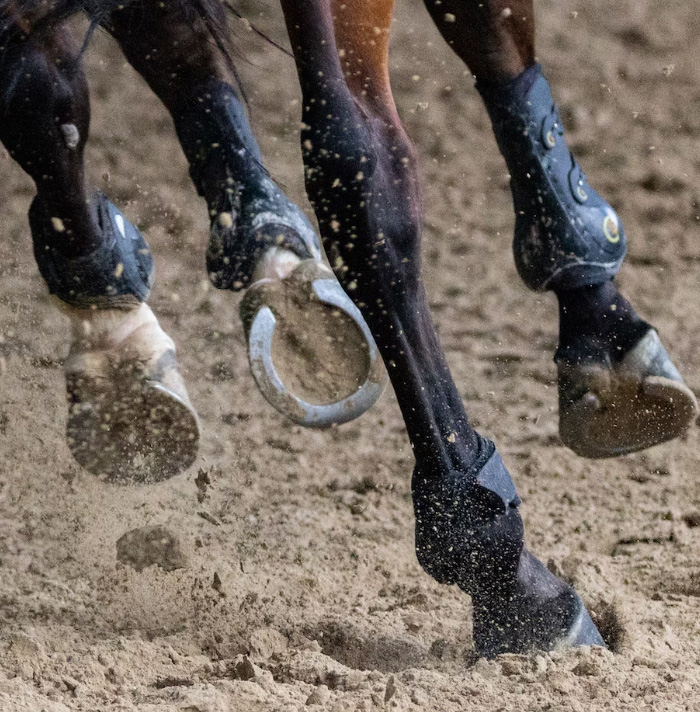 An animal's frog acts as a built-in shock absorber.
An animal's frog acts as a built-in shock absorber.
A triangle-shaped feature on the horse's foot's sole is the frog. Shock absorption and distribution to the internal digital cushion, a spongy structure under the horse's heels, is one of its many purposes. The horse's joints and bones are protected from concussive stresses thanks to the frog's inherent capacity to absorb and disperse shock.
Horses are herbivores.
Typical traits of herbivores include the shape of their teeth (grinding molars to break down fibrous plant material), the placement of their eyes (facing to the side to be on the lookout for predators), and the sort of digestive system they have.
Imagine a world with long-fanged carnivorous equines. We would be doomed!
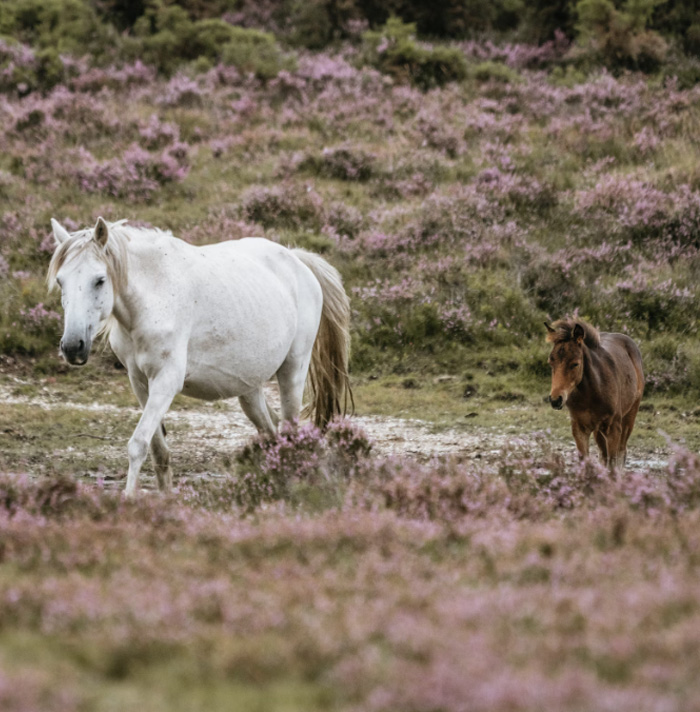 A foal is a baby horse.
A foal is a baby horse.
What distinguishes a filly from a colt from a foal? Age and gender both play a role. A foal is typically a young horse. It is referred to as a weanling once it has been weaned from its dam. But up until the age of four, horses are still considered fillies or colts.
There is one breed that has a metallic coat.
The coat of the Akhal-Teke horse is renowned. Many well-cared-for horses have lovely sheens, but this breed has a naturally metallic gleam. Everything has to do with the way its hair is structured. The Akhal-Teke's hair strands lack or have a very small core, unlike the opaque core found in the majority of horse breeds. It is replaced by the transparent portion of the hair, which causes each hair to appear to shimmer as light is bent and refracted as it passes through.
Horses are highly intelligent.
According to 2012 research, horses recognize and recall people using information from many senses. The horses could tell a familiar human from an unfamiliar one just by their sounds (without using sight or smell). The horses were also capable of the opposite, distinguishing between groups of people solely based on their appearance and odor rather than their voices.
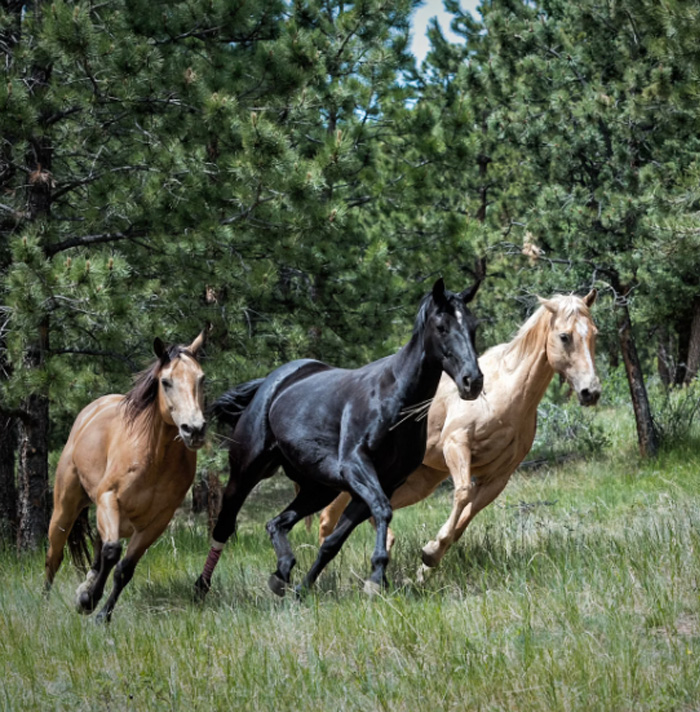 The record-breaking speed for a horse sprint is 55 MPH (88.5 KPH).
The record-breaking speed for a horse sprint is 55 MPH (88.5 KPH).
A Long Goodbye, a racing Quarter Horse, reached this astounding pace over a quarter-mile distance in 2005. (0.40 km). The horse ran parts of the race at nearly 50 mph and finished in exactly 20.686 seconds.
Keratin makes up the hooves of horses.
Horses' hooves are formed of keratin, the same protein that makes up our hair and nails. It is crucial that your horse has frequent trims because they are continually growing. This is crucial, especially for young horses, whose legs may become twisted and whose welfare may be jeopardized by neglected hooves.
No horses with albinism exist.
Horses do not exhibit albinism. Some coat hues, such as maximal sabino, cremello, or perlino, may initially appear to be albinos. However, studies have proven that this color-causing gene is not an albino gene. Rarely, a horse may be born completely white with pink skin, giving the impression that it is an albino. Dominant white is a color that is fundamentally distinct from albinism. Albino animals have a normal number of pigment cells, whereas dominant white horses have none. Lethal White Syndrome, a disorder, is connected to a gene that some white foals will possess.
Compared to other breeds, some Arabian horses have one fewer vertebra.
The Arabian horse is the foundation of many other light horse breeds. They also possess some unique characteristics. Most Arabian horses have one fewer vertebrae, rib bone, and tail bone than other horses.

 Dark Mode
Dark Mode 

 No fees, cancel anytime
No fees, cancel anytime 












































































